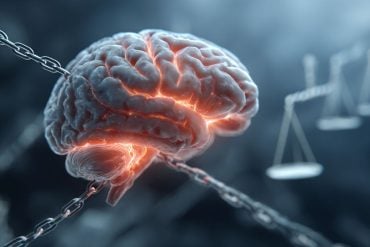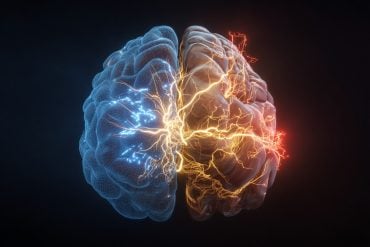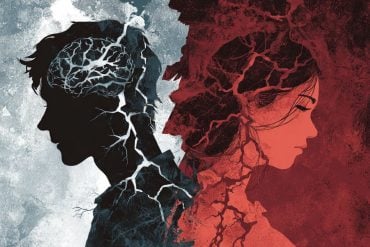Summary: Successful social interactions for adults on the autism spectrum revolve around partner compatibility, not just the skill set of the other person.
Source: UT Dallas
Autism is characterized in part by an individual’s challenges communicating and interacting socially with others. These difficulties have typically been studied in isolation by focusing on cognitive and behavioral differences in those with autism spectrum disorder, but little work has been done on how exchanges for autistic people unfold in the real world.
Researchers at The University of Texas at Dallas recently turned the spotlight on social interaction in autism by examining it as a two-way street. Their results, published in December in the journal Autism, suggest that successful interactions for autistic adults revolve around partner compatibility and not just the skill set of either person.
“Most studies attempting to understand social disability in autism focus exclusively on individual characteristics,” said Dr. Noah Sasson, an associate professor in the School of Behavioral and Brain Sciences (BBS) and corresponding author of the study. “This presumes that any difficulties in social interaction are driven solely by the autistic person. But how each person influences and is influenced by the other is key to understanding affiliation and social quality.”
The study focused on the so-called “double-empathy problem,” which predicts that two people who are neurologically different and have distinct modes of communication and understanding may have trouble connecting with each other, as commonly occurs in interactions between autistic and non-autistic adults.
“It’s not just that autistic adults can struggle to infer the thoughts and motivations of typically developing adults, which has been well documented; the reverse is true as well. Non-autistic people struggle to infer what autistic people are thinking,” Sasson said. “Anecdotally, many autistic people often report better quality of social interaction when engaging with other autistic people. We set out to test this empirically.”
Kerrianne Morrison MS’16, PhD’19, the paper’s lead author, explained that the concept of a social-interaction difficulty being a two-sided, relational problem — and not simply a shortcoming of the autistic person — is only beginning to take hold.
“Autism is such a young field of study. Examining differences depending on the context of social situations rather than dysfunction across all contexts is starting to gain traction in academia,” she said. “We believe this represents a better understanding of how people with autism can thrive in the right contexts.”
In the study, 125 adults held a five-minute, unstructured “getting-to-know-you” conversation with an unfamiliar person. Sixty-seven of the participants had been diagnosed with autism. Each participant then independently evaluated the quality of the interaction and their first impressions of their partner.
Autistic adults were not rated as less intelligent, trustworthy or likable by either the autistic or typically developing cohort, and importantly, autistic participants’ interactions with other autistic adults were viewed by them as more favorable than those with typically developing partners.
“While typically developing participants preferred future interaction with other typically developing partners over autistic partners,” Sasson said, “autistic adults actually trended toward the opposite, preferring future interaction with other autistic adults. They also disclosed more about themselves to autistic partners and felt closer to their partners than did typically developing participants.”
Autistic adults were rated as more awkward and less socially warm than typically developing adults by both autistic and typically developing partners. Some judgments were more favorable than those from Sasson’s previous studies in which people evaluated autistic adults in videos.
“Direct interaction seems to lessen some negative evaluations of autism,” Sasson said. “This aligns with previous work suggesting that direct experience and knowledge of autism can reduce stigma and promote inclusion.”
Typically developing participants also rated the conversational content with autistic and typically developing partners to be of similar quality. This shows that negative evaluations of autistic adults by non-autistic adults may be based more on social presentation differences and not their actual conversations.
“These findings suggest that social interaction difficulties in autism are not an absolute characteristic of the individual,” Sasson said. “Rather, social quality is a relational characteristic that depends upon the fit between the person and the social environment. If autistic people were inherently poor at social interaction, you’d expect an interaction between two autistic people to be even more of a struggle than between an autistic and non-autistic person. But that’s not what we found.”

Sasson said that he hopes this work shows that studying actual social interaction elicits a deeper understanding than studying individual abilities alone.
“Social disability in autism is context-dependent and emerges more in interactions with typically developing partners,” he said. “This likely reflects a mismatch in cognitive and communication styles that may improve with increased familiarity and acceptance.”
Morrison believes that this research is illuminating a crucial portion of the story for the autistic community.
“We’re moving beyond the existing research, which has fixated on social abilities in isolated, standardized contexts, and addressing this blind spot of real-world outcomes,” she said. “Particularly in adults, this is the information we need.”
Funding: The work was funded by the Texas Higher Education Coordinating Board’s Autism Grant Program and internal funding.
Other authors affiliated with the School of Behavioral and Brain Sciences include Dr. Robert Ackerman, associate professor of psychology; cognition and neuroscience doctoral student Kilee DeBrabander; and psychological sciences doctoral student Desi Jones. Daniel Faso PhD’16 is also an author.
Source:
UT Dallas
Media Contacts:
Stephen Fontenot – UT Dallas
Image Source:
The image is in the public domain.
Original Research: Closed access
“Outcomes of real-world social interaction for autistic adults paired with autistic compared to typically developing partners”. Noah Sasson et al.
Autism doi:10.1177/1362361319892701.
Abstract
Outcomes of real-world social interaction for autistic adults paired with autistic compared to typically developing partners
Differences in social communication and interaction styles between autistic and typically developing have been studied in isolation and not in the context of real-world social interaction. The current study addresses this “blind spot” by examining whether real-world social interaction quality for autistic adults differs when interacting with typically developing relative to autistic partners. Participants (67 autism spectrum disorder, 58 typically developing) were assigned to one of three dyadic partnerships (autism–autism: n = 22; typically developing–typically developing: n = 23; autism–typically developing: n = 25; 55 complete dyads, 15 partial dyads) in which they completed a 5-min unstructured conversation with an unfamiliar person and then assessed the quality of the interaction and their impressions of their partner. Although autistic adults were rated as more awkward, less attractive, and less socially warm than typically developing adults by both typically developing and autistic partners, only typically developing adults expressed greater interest in future interactions with typically developing relative to autistic partners. In contrast, autistic participants trended toward an interaction preference for other autistic adults and reported disclosing more about themselves to autistic compared to typically developing partners. These results suggest that social affiliation may increase for autistic adults when partnered with other autistic people, and support reframing social interaction difficulties in autism as a relational rather than an individual impairment.






